The truth about Crown of Thorns: debunking the myth and understand their important role in a healthy coral reef ecosystem.
- Laura
- May 19, 2024
- 5 min read

Though majestic to look at with colorful shades of turquoise, orange and sometimes red, the Crown-Of-Thorns (COT) starfish (Acanthaster Planci) get a lot of bad press for their coral-eating diet and presumed impacts on coral reefs ecosystems. This reputation has led to a lot of hate and negatives reactions from tourists when they are seen in the wild, sometimes even deciding to take matter into their own hands and kick them, kill them, removing them from the water... But is the hate really founded?
On a healthy reef ecosystem, all species have a purpose, are interconnected and interdependent.
An ecosystem is a complex network of interactions between native species to organize a thriving community. Almost everything is a prey and also a predator. Primary consumers feed on the primary producer. But are being preyed upon by secondary consumers. These predators are themselves being hunted by tertiary consumers, who are being preyed by top predators. Nothing is good, nothing is bad: everything is needed, to maintain the balance of the ecosystem. And under these general guidelines, many many more smaller interactions between species to species are ongoing to keep a complex, fragile and fascinating functional ecosystem that benefits each and the whole. This is a healthy reef and every species contribute to it.
Organisms such as the Crown-Of-Thorns (C.O.T) starfish (Acanthaster Planci) are part of this network. Such as butterflyfish (Chaetodontidae), long-nose filefish (Oxymonacanthus longirostris), Drupella, Coralliophila, Cushion star (Culcita novaeguineae), Hawksbill turtles (Eretmochelys imbricata), and many others, they feed on corals. Crown-Of-Thorns feed primarily on fast growing, vulnerable or diseased corals, maintaining balance and health on the reef and between coral colonies. Without such predators, fast growing corals could take over, not leaving any room for slower more resilient ones; bacterial infestions could spread and really quickly devastate the reef (especially if that reef lacks species diversity). The starfish can grow up to 80 cm in diameter. Despite their large adult size, they are often difficult to find on a reef, preferring to hide under ledges and crevices during the day. Crown-Of-Thorns are usually nocturnal but seeing one or two during a dive is no cause of alarm, it is the sign of a healthy reef.
What is an outbreak?
A high number of Crown-Of-Thorns present on a reef (more than 30 per hectare) might indicate the beginning of an outbreak and reveals an imbalance on the delicate reef ecosystem.
Outbreaks are usually occurring during summer season as they are most active at that time and preparing to spawn. They can be problematic as Crown-Of-Thorns are voracious eaters, and while in normal abundance they have a positive impact on the reef, an outbreak might lead to loss of coral population.
Adult starfish generally prefer to feast on fast-growing corals, such as branching corals and plate corals of the genus Acropora but can also have an appetite for porites corals.
Large starfish can eat on average 61 cm2/day in winter and 357 to 478 cm2 per day in summer (Keesing JK, Lucas JS (1992). "Field measurement of feeding and movement rates of the crown-of-thorns starfish Acanthaster planci (L.)".) . Considering that corals usually grow at a rate of 10cm maximum per year, a prolonged Crown-Of-Thorns outbreak can do a lot of damage on a healthy reef. Their high number lead them to stray from their usual behaviors and expand their food sources to not only vulnerable corals, but also healthy ones.
TIMELAPSE OF A CROWN-OF-THORNS STARFISH SCURRYING TO HIDE UNDER ITS MEAL - A TABLE CORAL. BY AUSTRALIAN INSTITUTE OF MARINE SCIENCE.
However, as they will eat their food source will lessen in a matter of a few weeks or months, they will start preying on each other, and their population will finally decline. Commonly, outbreaks will occur during summer seasons for phases of 3 months, after which the Crown-Of-Thorns will turn into cannibalistic phase, ending the outbreak. As temperature lowers, the remaining few Crown-Of-Thorns will go back to their normal behavior patterns, eating less and favoring vulnerable corals.
What causes an outbreak?
Crown-of-thorns starfish outbreaks are a complex ecological problem and have been studied around the world for decades. There is general agreement that outbreaks have always naturally occurred in phases over the world, but human activities have altered the frequency of these outbreaks and ability of some reefs to solve them without extended damages.
Several hypotheses regarding the cause of elevated outbreaks are being investigated however, it is likely that at least two factors are involved:
Overfishing & the removal of predators (fish and invertebrates), which reduces predation pressure on the starfish, particularly at the juvenile stage.
Hot &/or polluted waters and increased larval survival due to increased nutrients increasing phytoplankton levels – the food of crown-of-thorns starfish larvae.
Sometimes, a disease outbreak on the reef might also be the underlining cause of a higher incidence of Crown of thorns on the reef. Most of the time a COT outbreak is a direct result from overfishing and the cascading impacts on the marine food webs that results from it. By overfishing predators that preys on the Crown-Of-Thorns and keep their population numbers in check, they will thrive and over-eat their food.
Most outbreaks will solve on their own in the matter of 3 to 6 months and though it is heartbreaking to witness the impacts on a reef, it is not recommended to interfere as this might further impact the delicate balance of the reef and worsen the damages.
Why should you never stress a COT ?
Aside from the obvious ethical aspect of this question, it is extremely important to know that Crown-Of-Thorns are stress-spawning organisms. When feeling threatened, these organisms have the survival instinct and reflex to release sperm or eggs (per millions) in the water. For that reason, it is extremely important to avoid manipulating, poking or stressing in any kind these organisms. Most especially during a time of outbreak or during summer season. Killing / removing Crown-of-thorns by wanting to stop an outbreak from ongoing, might just as well perpetuate it or create a much bigger outbreak for future seasons in nearby reefs (depending on where the current takes the new larvae).
What can we do about Crown of thorns outbreaks?
As mentioned below, most outbreaks will naturally solve on their own and what we should really focus on is the root cause of the outbreak. Commonly, they are linked to human interactions pressuring our oceans and causing imbalances with cascading impacts on the marine food web.
In the case of Crown of thorns, it is extremely important to protect their predators from being further overfished.
Protecting these species and limiting human pressures in imbalanced reefs is usually the best course of action for the long term health and recovery of the reef. Without this, outbreaks, will keep reoccurring. Pollution and climate change are also important factors favoring outbreaks and should be looked upon in the case of reoccurring outbreaks in a reef.
In some extremely impacted reefs that no longer are functional as ecosystems, or have already extremely impacted coral cover (as this the case in the Great Barrier Reef), interventions might be necessary after prolonged and repetitive outbreaks. These interventions should always be done by trained professionals that act following strict international protocols with the highest caution to avoid creating bigger imbalances. It usually involve injecting them with a dose of vinegar to kill them before they have time to stress-spawn. However, there is always a risk. But if intervention is the course of action chosen, this is usually because it is believed that the reef will not recover on its own. In addition to the intervention, measures to protect corals and fish populations and limit human interactions should absolutely come hand in hand for successful recovery of the reef.
If you are more curious about Crown of Thorns we can recommend:
Reading material
Resources from the Australian Great Barrier Reef Marine Park Authorities here
Join a course with CRCP (click on the picture to read more)



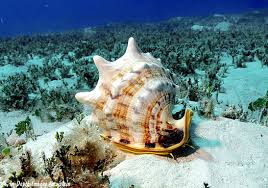
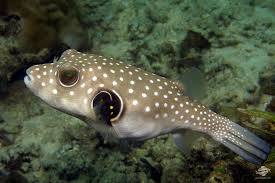
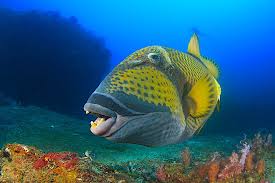
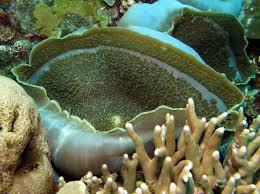
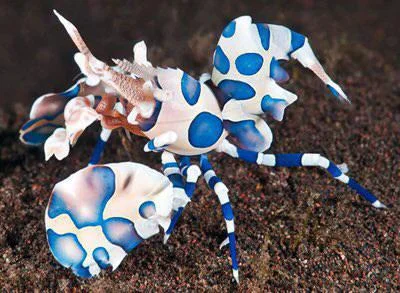

Comentarios